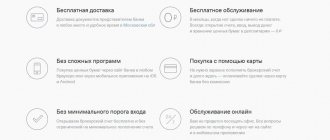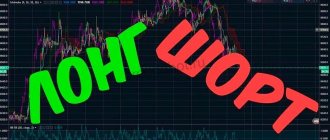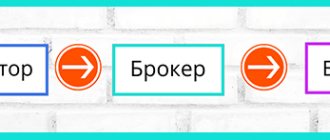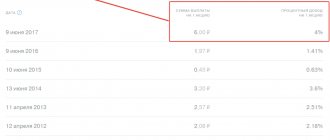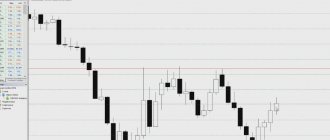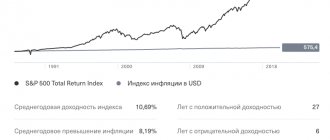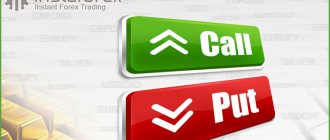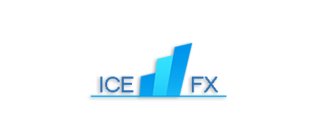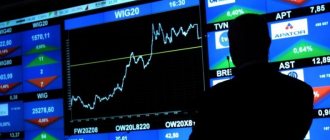Margin trading is a method of carrying out trading operations on the stock market, which uses funds provided on credit against the security of the amount specified in the margin agreement.
Such trading is carried out using leverage. Margin transactions are highly risky without a proven systematic approach and often lead to bankruptcy of investors. Such operations both increase and decrease profits, this depends on the fluctuations of shares in the market, since they are unpredictable and subject to force majeure situations.
Anyone who has a brokerage account or an individual investment account can trade long and short on the Tinkoff margin exchange. To do this, you just need to enable the “margin trading” mode in your personal account. However, you will not be able to trade on margin if you have a negative position in the currency and security.
To enable this trading mode, you need to log in to the Tinkoff Investments application, click on the gear icon in the upper right corner and move the switch to the ON position next to the words “Margin Trading”. After this, you will see information about your “Liquid Portfolio”.
What is a liquid portfolio
A liquid portfolio is the value of currencies and securities in a brokerage account and/or individual investment account. Foreign currency, securities and Eurobonds are calculated in rubles at the exchange rate. The price of the portfolio does not include: bank card balance, savings account, deposits. In margin trading, only assets from brokerage accounts and individual investment accounts are used. The state of the liquid portfolio determines which transactions can be made on the exchange. This can be determined using the indicator:
- The green color of the indicator means that the value of the portfolio is greater than the initial margin - the broker can buy and sell currencies and securities, withdraw funds from the brokerage account
- Orange color means that the value of the liquid portfolio is less than the initial one, but more than the minimum - in this case, you can carry out transactions that will increase the value of the portfolio, it is forbidden to open new transactions and withdraw money until the indicator turns green; It is recommended to top up your account and wait for the asset price to change
- Red color means that the value of the liquid portfolio is less than the minimum - a margin call can occur at any time and the broker will be forced to forcibly close positions and sell part of the assets from the trading account to cover their losses and return the indicator to the green zone; it is necessary to close uncovered positions and replenish the account.
How long margin trading works and how to calculate the initial and minimum margin
If the position is short, the margin is calculated at the short rate, if long - long.
Long is the purchase of securities or currency with the expectation of asset growth. To start trading on the stock exchange, it is necessary for the broker to determine the price of the investor’s liquid portfolio and take into account the currencies and securities that are included in the liquid list. Next, the initial margin is calculated - the amount of money that is needed to open a position, provided that there is leverage and the minimum margin - the balance of funds, upon reaching which the position can be forced to be closed. This is done in order to open and hold an uncovered position. The portfolio size is compared with the initial and minimum margin to assess the possibility of making a long trade. Next, the investor selects an asset to purchase. For each asset there is a fixed risk rate, on the basis of which the amount for the transaction is calculated. Every time the value of a liquid portfolio changes, the broker recalculates the initial and minimum margin and the entire composition of the portfolio itself. If its value is greater than the initial margin, new transactions can be carried out.
The initial and minimum margin are calculated for each asset separately. The value of the asset is multiplied by the initial and minimum risk rate of the long. To calculate a liquid portfolio, you need to add the initial and minimum margin for each asset. Only the initial ruble rate is not taken into account if it is zero.
Conditions for maintaining uncovered positions
In order to find out all the nuances of the service, you need to open the “Conditions for maintaining uncovered positions” on the official Alfa-Direct website alfadirect.ru in the “Documents and Details” section. This subsection displays all rates on credit transactions.
In order to find out the conditions, you need to go to the official website of Alfa-Direct.
Risk rate*100 is the share of the client’s funds in the transaction.
1/risk rate is an exchange key that shows how many times the broker is willing to increase the trader’s position.
For example, a stock has a risk rate of 0.311. For a client to open a deal for 1 million rubles, he needs only 311 thousand rubles. own funds, the rest will be provided by the broker.
For higher-risk clients, these rates are lower. Accordingly, they can get more money for margin trading.
How short margin trading works and how to calculate the initial and minimum margin
Short is a short position when an investor does not own shares himself, but simply borrows them from a broker, expecting redemption at a lower cost, or in other words, this is an opportunity to profit from the difference between selling and buying short.
Margin trading for shorts works in almost the same way as for long. First, the value of the liquid portfolio is determined, then the initial and minimum margin are calculated. The investor's liquid portfolio is compared with the initial and minimum margin and the possibility of conducting a short transaction is assessed. Next comes the choice of a fixed rate and the amount available for the transaction is calculated. The value of the portfolio is recalculated when its composition changes. All assets in a brokerage account and individual investment account are considered as follows: open positions with a “+” sign, uncovered positions with a “-”. Transactions on the exchange can be carried out if the initial margin is less than the value of the liquid portfolio. For short transactions, the asset price is multiplied by the initial and minimum short risk rate. Assets on open positions are accounted for at the long rate, with uncovered positions at the short rate.
What's the catch with shorts?
People have a thirst for profit and a desire to earn more and faster. Therefore, they choose to sell short and thereby expose themselves to enormous risks. You can lose all your capital and become bankrupt using such methods.
Tinkoff Investments - how does it work?
It is important to remember that if short trading turned out to be successful for you and you made good money on it, this does not mean that it will always be so. Nobody knows how the stock market will behave and which stocks will fall or rise. In short positions, the market falls more often, but grows over the long term. Excitement can play a bad joke, and you won’t be able to stop in time. As a result, you will lose more than you initially earned. There are such examples and there are many of them.
- For example, at a certain moment we think that the stock will now go down and sell it short for $7.12 in order to make money on the decline.
- But the shares went up. You can hurry up and buy shares in a big minus at $7.36 in order to close the margin that was taken from the broker.
- Subsequently, the shares still fell, but since this is never known in advance, it is not always possible to wait for this moment. Thus, the deal turns out to be absolutely unprofitable. Especially if you take into account the broker’s commission for each day
For the broker, such operations are very profitable; he receives his huge percentages every day of your trading and does not risk anything. You also pay a commission for each transaction made. The more transactions you make, the more profitable it is for the broker.
Also, don't underestimate the fact that short trading is unhealthy. Constant tension, worries, expectations and disappointments can result in problems with well-being. Remember, margin trading is not for everyone.
Tariffs in margin trading
The cost of margin trading consists of the commission for trades using leverage. In this case, the investor pays the usual commission at his own rate for assets purchased both at his own expense and at the expense of the broker. The same happens when they are sold. There is also a fee for using leverage. When purchasing assets with leverage and selling them on the same day before the exchange closes, the fee for using leverage is not charged. The longer an investor delays rolling over an uncovered position purchased with leverage, the higher the subsequent fee. The table below shows the rates for margin trading in Tinkoff investments:
| Leverage cost (Sum of uncovered positions) | Transfer cost per day |
| For free! | up to 3000 rubles |
| 25 rubles | up to 50,000 rubles |
| 45 | up to 100000 |
| 85 | up to 200000 |
| 115 | up to 300000 |
| 185 | up to 500000 |
| 365 | up to 1 million |
| 700 | up to 2 million |
| 1700 | up to 5 million |
| 00033% of the amount of unclosed positions | More than 5 million rubles |
*If you close a position on the same day, the leverage cost is not written off!
What is an uncovered position in Tinkoff
An uncovered position is the occurrence of a negative value when opening a trade in a security. In simple terms, these are assets with a negative value that were lent to you by a broker, secured by the assets you have in your account. In the Tinkoff trading interface, it is indicated by a “minus” symbol.
What is risk rate
The risk rate in margin trading is the possibility of changes in the value of an asset on the exchange. The higher the risk rate, the more likely the value will change. The larger the margin provided by the broker, the higher the risk for the investor. There is an explanation for what is happening - the more borrowed funds are higher than the investor’s funds, the more expensive the movement in value is for him. Changes that do not occur in his favor can lead to the destruction of the brokerage account.
What is a margin call
Margin call is the state of a liquid portfolio when its value falls below the minimum margin. In this case, the broker has the right to close part of the positions using assets in the IIS and brokerage account in order to avoid the portfolio value falling to zero.
- How Tinkoff is useful to investors working in the stock market
- Useful details
- Subtleties of registration
- Rates
- Trading with Tinkoff
- Additionally
- Asset value comparison
- Impact of commissions on results
- Example
- Other brokers
- Working with dividends at Tinkoff Investments
- Subtleties of taxation
- Withdrawal of funds
- Summary
In order to reach the widest possible audience, brokers are lowering the entry threshold into trading. You can work on Forex starting with just a couple of dollars in your account , and registration is done remotely. The stock market is following the same path: new clients are needed. To reach the maximum possible audience, access to stock trading is constantly being simplified. Today we will study the solution from Tinkoff , we will understand what Tinkoff investments are, how it works and we will also consider.
Looking ahead, I note that only the technical component of trading in the stock market is simplified. Buying stocks is indeed becoming easy, but choosing an asset and when to buy it remains a challenge. Beginner traders and investors need to understand this.
How and how much you can earn
Let's look at the principle of operation of Margin Trading and how to go short in Tinkoff Investments. If you think that a company's shares will fall today or soon, you can sell them short. That is, click the “Sell” button on the stock card, even if you don’t have these shares.
The application will calculate how many shares are available for sale based on the liquidity data of your portfolio.
In the “Quantity” field, you can enter the available number of shares and the amount of your debt to the broker will be calculated. This is exactly the number of shares you will have to give to Tinkoff today, tomorrow, in a week, etc. The longer you hold the shares, the more you will pay.
If your assumptions turn out to be correct and the price of the stock falls, then you will buy them at a lower price. Your profit is the difference in price minus commissions. If you manage to complete the transaction within one day, then no loan fee is charged.
Let's look at an example of how to open a short in Tinkoff Investments:
You think that Gazprom shares will fall sharply in the near future and you sold 7 Gazprom shares for 5,000 rubles.
Your assumptions were justified, and after 5 days you buy back these shares for 3,500 rubles. Income 5000-3500=1500 rubles minus broker commission.
You made a mistake, and the shares creep up, you are forced to repay the debt and buy back the position for 6,000 rubles. Loss 6000-5000 = 1,000 rubles plus broker commissions.
The broker provides a protective mechanism for its interests - a margin call or forced closure. This is a situation in which the trader's current level is not sufficient to maintain the position. And the broker, in order to protect the client from a sharp loss of money and himself from non-payment, closes negative assets. This is how you can describe shorts using examples in simple words in Tinkoff Investments.
How Tinkoff is useful to investors working in the stock market
This bank is convenient because it allows you to buy securities of companies around the world from your personal account; it supports working with shares of ETF funds . Previously, Tinkoff worked in conjunction with BCS , clients received access to the stock market through it. But in the spring of 2021, Tinkoff was issued a broker license and now work is being carried out through it.
The client base is actively growing. If in August 2021 the broker took 5th place in terms of the number of registered clients, then in April 2019 it is second only to Sberbank. In less than a year, the customer base has quadrupled .
remote registration is provided for individuals (if they are already clients of the bank). If not, then the courier will bring all the necessary documents to your address, which is much more convenient than opening an account when visiting the office.
Useful details
Among the features of investing in the stock market with Tinkoff, I would like to note:
- Maximum simplicity . No need for QUIK, MetaTrader, or NinjaTrader. In terms of complexity, purchasing shares is similar to purchasing goods in an online store. Select the type of asset, set the transaction volume and submit the application.
- Access to foreign trading platforms . There is access to the NYSE , NASDAQ , LSE (London Stock Exchange).
- There are hundreds of stocks available , including ETFs , and you can invest in bonds. Premium tariff promises over 10 thousand stock market instruments from 30 countries. True, they do not provide a list of assets, referring to the provisions of Federal Law 39 , namely Article 51.1
- Tariffs at first glance are higher than those of competitors, but the bank says that this is due to the absence of hidden fees . We will talk about this separately.
- Depositing and withdrawing funds from a bank account to a brokerage account is carried out without commissions from the company.
- You don't have to pay for a smartphone app to work on the stock market .
Thanks to the overdraft, instant withdrawal of funds to the card . The proposal looks very interesting, but there is also a negative side - we will also talk about this below. After a quick acquaintance, the Tinkoff investment service looks at least an interesting offer.
Subtleties of registration
open an account if the following conditions are met:
- Age from 18 years , the applicant is a citizen of the Russian Federation .
- You are a tax resident of the Russian Federation .
- You are not a close relative of the official and do not hold the corresponding position (Federal Law No. 115, Art. 7.3).
If you are going to invest in IIS in addition to working with the stock market, then you should not have accounts with other IIS brokers . It is prohibited to open more than 1 individual investment account at the same time.
As for the registration itself, the process depends on whether you are a Tinkoff client :
- Those who use the bank's services can fill out an application on the website tinkoff.ru, confirm the opening of an account via a code from SMS and immediately start trading.
- If you have not used bank services before , the process will take a little longer. The application can also be submitted online, but you will not be able to work immediately. The courier will bring the documents, you will be given a Tinkoff Black , after which you will have access to trading on the stock market.
I recommend opening an account using this link . You will receive 1000 rubles as a bonus without additional conditions . You can also save on plastic maintenance. Open a Tinkoff Black card and get a 3-month discount.
Order a debit card and get a 3-month discount
Another nice bonus is the opportunity to earn money as part of the “ Refer a Friend ” promotion. You convince your friends and relatives to register with Tinkoff and earn 1000 rubles.
Fill out the online application form to open a Tinkoff account
The video below is a detailed review of the service .
Rates
There are 3 types of tariff plans :
- Investor - for beginners working with the stock market. 99 rubles for service , but only in those months when trading is carried out ; the rest of the time the money is not written off. The commission for buying and selling shares, bonds, ETFs is 0.3%. If you haven’t encountered ExchangeTradedFunds before, the article on what ETFs are will be useful.
- Trader – the tariff is suitable for those who actively trade. The account maintenance fee increases to 590 rubles per month, but it can be reduced to 0 if you are the owner of a Tinkoff Black Platinum . Also, no fee is charged for turnover over 5 million rubles/month. or with a brokerage account balance of 2 million rubles. In months with zero activity, no money is written off. The commission is 0.05% , it is reduced to 0.025% only when the turnover reaches 200 thousand rubles. from the beginning of the day.
- Premium – aimed at large investors . A personal manager is assigned to such a client, and analytics are provided upon request. The key, in my opinion, is the maximum number of assets available for trading - there are more than 10,000 of them. The broker also accompanies the client until he receives the status of a qualified investor. Commission from 2% (when working with structured notes) to 0.025% when purchasing domestic and foreign shares and other stock instruments market.
Clients who opened a brokerage account before May 15, 2018 must do so again. Before this date, the account was created in the BCS company, after - in the Tinkoff broker.
As for the premium tariff , it is clearly not for everyone. To use it, you need to buy securities worth at least 6 million rubles. Another option is that the investor’s property must be valued at least 6 million rubles (this includes money on bank deposits, unallocated metal accounts, and securities). The Premium tariff also available to investors who have completed specialized training. The status must be confirmed by FRM , GIIA , CFA ; a certificate of an auditor or insurance actuary is also suitable.
If the review of tariff plans did not provide clarity, and you cannot decide, the bank allows you to change them an unlimited number of times for free. Just keep in mind that with each such transaction, the beginning of the reporting period changes and the service fee is written off upon the first transaction. That is, constantly “jumping” between tariff plans is unprofitable - you will lose more on the cost of service .
Trading with Tinkoff
It was already noted above that there is no separate trading terminal here . the Catalog tab contains all asset groups - stocks, bonds, currencies, ETFs. Here you can find recommendations on what to buy and read reviews. The catalog has filters by industry, price changes per day - everything is standard.
As for how to buy shares, the required security and the volume of the transaction are indicated. All that remains is to press the button to purchase paper. The commission is calculated automatically in the same window, and the purchase is paid either from a bank card or from a brokerage account. The transaction must be confirmed by entering the code from SMS . Until you do this, the money will not be written off and the securities will not be purchased.
When trading, it is advisable to avoid additional losses on currency conversion. So, if you work with shares of Russian companies, use a ruble account. If with foreign ones - dollar. To purchase, for example, American securities, you can also use a ruble account, but then additional losses will arise due to the conversion of rubles into dollars.
As an option, it is possible to purchase currency and then pay for securities. With this scheme, you will have to pay a standard commission.
Additionally
There are 2 more nuances in trading:
- When Tinkoff was an intermediary between the trader and BCS , trading was carried out on the OTC market (overthecounter - over-the-counter market). Now work is underway on the stock exchanges.
- At the time the transaction is concluded, the broker slightly increases the purchase price and reduces the cost of the paper for sale (by 0.3%). This is done to protect against volatility. If the chart does not go beyond this corridor, the deal is concluded. If there is a change of more than 0.3%, you will have to repeat everything all over again. Tinkoff does not take anything for itself; the difference is then credited to the brokerage account.
Help section on the website tinkoff.ru. Most of these points are explained there.
Asset value comparison
Let's compare share prices at Tinkoff and on stock exchanges. Tinkoff Apple as $203.81 . Please note that the purchase price is different, the reason for this was discussed above.
You can find out the current price of a security, for example, on TradingView. We see the price at $203.86 , the difference of 5 cents is due to a 15-minute delay on the Tinkoff website, since we are working in demo mode.
There is no minimum transaction amount . You can buy bonds one at a time; in the case of stocks, you will have to work with lots. The number of securities included in a lot varies depending on the company. There can be 100 or 1000 of them. The exception is working with currency. It can be bought on the MICEX in incomplete lots, literally from $1. The work is carried out in off-system mode.
If the question of how to invest in Tinkoff investments seems too complicated, a special robot that selects the composition of the portfolio can help.
He won’t recommend anything outstanding ; investment portfolios are not balanced. If you use it, then manually filter each of the proposed papers.
Impact of commissions on results
If you study the reviews, one of the most common complaints is the amount of commissions . According to traders and investors, they are too big. In my opinion, it all depends on the situation. Sometimes they really seem unacceptable, but more often they are on par with other companies.
Example
- During the month, 1 bond was purchased for 1000 rubles, a commission of 0.3% or 3 rubles was written off from the transaction. Since trade was carried out during the reporting period, you will have to pay 99 rubles. for account maintenance, the trader will ultimately pay 10.2% of the purchase amount. This is really a lot, but in reality few people trade in this mode. There are more transactions, the volumes are higher , so it’s very difficult to lose 10% on commission even if you want to.
- If you do the same on the Trader , then at the time of concluding the transaction, in addition to the commission fee, the cost of servicing the account in the amount of 590 rubles will also be debited That is, the losses would be almost 60%.
I give these examples so that before choosing a tariff, you can adequately assess your capabilities and immediately choose the appropriate plan. But what high commissions hinder is the creation of an investment portfolio with a small capital. Previously, there was an educational program on how to form an investment portfolio, I recommend that you familiarize yourself with it. But high fees reduce the effectiveness of this technique.
Other brokers
When it comes to comparisons with other companies, details matter. At Tinkoff, everything is actually included in the commission the depository separately . A couple of examples:
- BCS - on the tariff plan, the commission ranges from 0.0177-0.0531%. In this case, you will have to pay an additional 177 rubles per month for the depository, 118 rubles for repo transactions (incomplete coverage), and 300 rubles for using QUIK (if the amount is less than 30,000 rubles). minus commission, for MT5 – 200 rubles. with monthly decline;
You can open an account with BCS here
- At Finam, on the Daily tariff, with a turnover of less than 1 million per trading session, they will write off 0.0354% per transaction, but not less than 41 rubles. 30 kopecks
So everything is relative. When comparing directly, Tinkoff does indeed have higher commission fees. But if you take into account the ease of use , you don’t pay much attention to this. Calculate losses on commissions in advance .
Available trading instruments at Alfa-Bank with leverage - list
Alfa-Bank provides several tools for trading with leverage. They are divided into 2 types:
- REPO transactions (securities);
- SWAP transactions (currency).
Derivatives market
This broker cannot open short or long transactions on derivatives market securities (options and futures).
Currency
Alfa-Direct allows you to open positions in currencies such as the dollar, euro, British pound, and Swiss franc. The minimum transaction lot is 1,000 monetary units.
Alfa-Direct allows you to trade different currencies.
The broker provides high margin leverage. It is also possible to withdraw funds to a debit account.
Russian shares and bonds
Alfa-Direct presents ordinary and preferred Russian shares, government and municipal bonds.
The risk rate for most assets in this group is in the range of 0.3-0.5, less often 0.75.
American stocks
The presented broker allows you to carry out margin trading of assets of the largest American issuers. For example, Adobe Inc., Adidas AG, Alphabet Inc., Amazon.com Inc. and etc.
Alfa Direct sets low risk rates of 0.3-0.5 for such positions.
Working with dividends at Tinkoff Investments
Since the service is also aimed at beginners, I will go into more detail about the nuances :
- Dividends are optional, they may not be paid , directing all income to the development of the company.
- You do not need to hold securities all the time; it is enough to be in the register of shareholders on the day it closes. And since trading is conducted according to the “T+2” scheme, information about the transaction gets there only 2 days after its conclusion. This means that you need to buy papers 2 days before the cutoff. Read more about how to buy shares as an individual and receive dividends
- Do not reset the paper immediately after payment ; wait until it rises in price.
Funds are credited to a brokerage account or IIS. As for the timing, for Russian securities enrollment occurs within 8-25 days. In foreign countries, this takes 2-4 weeks.
How to open a position
You can open a deal through the Alfa Terminal. It is available to all Alfa-Bank clients. Using this program, you can view the available amount, taking into account uncovered trading, for the security of interest in the “Trade Order” window.
Alfa Terminal is available to all clients.
There is no need to confirm or agree on additional money. Alfa-Direct does this automatically.
Subtleties of taxation
One of the advantages of Tinkoff Bank is that in most cases it will pay taxes for you , saving a lot of time. Let me briefly go through the nuances :
- Tax is paid only when profit is taken . That is, if you hold securities and the position is profitable, then you do not need to pay anything until you decide to close it and withdraw the profit.
- The tax is debited from the brokerage account and only in rubles .
- When working with foreign securities, the tax policy of the issuing state . If you plan to buy US stocks and earn dividends, be sure to sign Form W-8BEN so that you are charged 13% rather than 30%.
- OFZs stand apart ; taxes are not paid on coupon payments. For other debt assets, the base is calculated as the difference between the coupon yield, the Central Bank rate and the excess payment by 5%. Example: they pay 15%, the Central Bank rate is 9%, in this case you will have to pay tax on income of 15 - 9 - 5 = 1% . I recommend reading the post about investing in bonds, it tells more about this type of asset.
- There is no double taxation . Example - they earned money from dividends from American securities, the USA will deduct 10%, and since in the Russian Federation the tax is 13%, the tax authorities will have to pay the difference of 3% on their own. This is the case when the investor will have to work with taxes.
If you want to fill out form 3-NDFL yourself, leave the brokerage ruble account empty. A representative of the broker will contact you; if you refuse the request to deposit rubles to pay taxes, you will have to resolve this issue yourself.
Withdrawal of funds
Instant withdrawal of funds is truly implemented here and this is not an exaggeration. Let's take a closer look at how this is implemented :
- When selling shares physically, the funds would be credited to the broker's account only after 1 or several days; trading is conducted according to the T+ scheme .
- So that the client does not have to wait, the bank connects an overdraft to the card - a lending service .
- At the time of withdrawal, the client is given borrowed funds equal to the amount of profit withdrawn. When money comes into the company from the sale of shares, they repay the loan. The client does not pay a fee for using an overdraft. The daily limit is 1 million rubles.
It is convenient to make investments at Tinkoff Bank, but one point was not taken into account - information on overdrafts ends up in the credit history bureau . Corresponding reviews are available on banki.ru. If you are planning to take out a loan, it is unknown how another bank will react to this information.
The solution is simple - after selling the shares, wait a couple of days and then withdraw the money. In this case, the overdraft is not activated.
Open an account with Tinkoff Investments
Withdrawal of funds secured
Withdrawal of funds is carried out secured by securities; in fact, you take money on credit from the broker. As for Tinkoff investments, it is possible to withdraw funds without selling assets. If there are liquid bonds and shares in a brokerage account or individual investment account, they are allowed to be used as collateral for the withdrawal of funds to a bank card. You can make a withdrawal in your personal account on the Tinkoff Bank website tinkoff.ru by selecting: “More”, “Withdraw”. When withdrawing money from the account, there will be an uncovered position that must be closed within one day without commission. After this time, the broker's commission will be charged.
